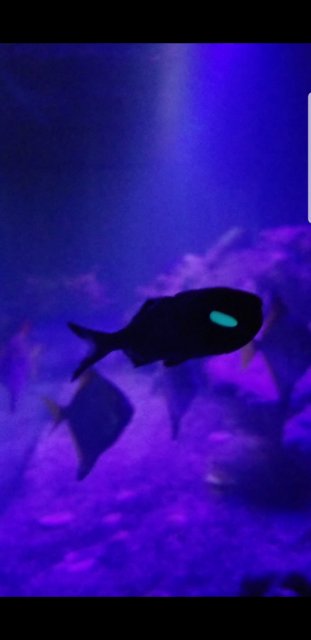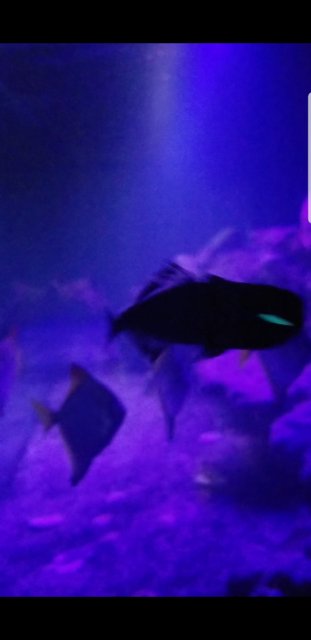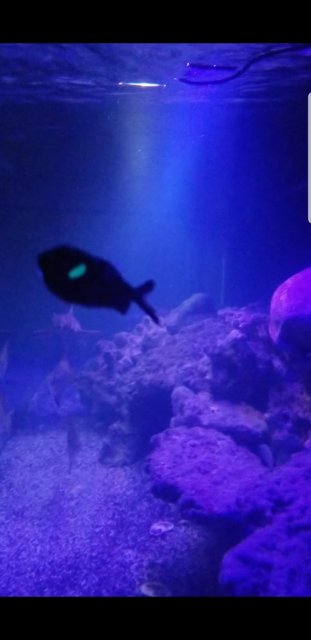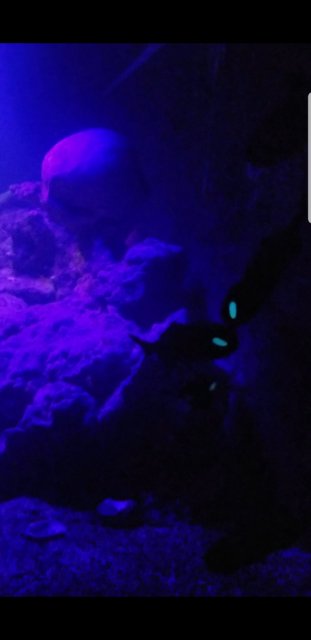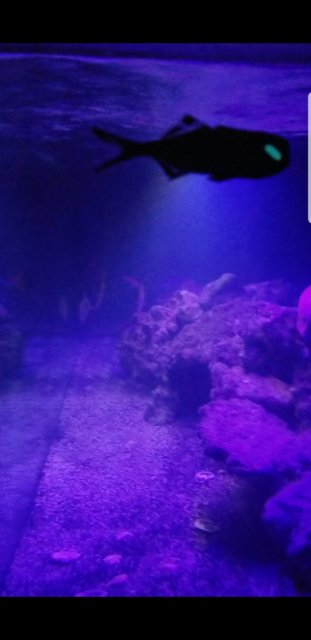Aliens in the tank
- Thread starter Mushutherhinoscorpion
- Start date
That’s pretty cool. Didn’t know they have fish with bioluminescence that can be kept in the home aquarium.
I seen them on the internet going for $80 to $120 each lol.......I ask my LFS if he can get them & he said he could & for $25
Anomalops katoptron or flashlight fish.What are they called?
"Flashlight fish" ...scientific name "Anomalops katoptron".Anomalops katoptron or flashlight fish.
The splitfin flashlightfish or two-fin flashlightfish(Anomalops katoptron) is a species of beryciform fish in the family Anomalopidae. It is found in warm waters in the central and western Pacific Ocean near shallow reefs 200–400 m (660–1,300 ft) in depth.[1] It can grow to a length of 35 cm (14 in) TL. It is the only known member of its........this is the species I have ...
The splitfin flashlightfish or two-fin flashlightfish(Anomalops katoptron) is a species of beryciform fish in the family Anomalopidae. It is found in warm waters in the central and western Pacific Ocean near shallow reefs 200–400 m (660–1,300 ft) in depth.[1] It can grow to a length of 35 cm (14 in) TL. Anomalopidae (lanterneye fishes or flashlight fishes) are a family of beryciform fish distinguished by bioluminescent organs located underneath their eyes, for which they are named. These light organs contain luminous bacteria and can be "shut off" by the fish using either a dark lid or by being drawn into a pouch. They are used to communicate, attract prey, and evade predators.[2]
The Beryciformes are a poorly-understood order of carnivorous ray-finned fishes consisting of 7 families, 30 genera, and 161 species.[1] They feed on small fishand invertebrates. Beyond this, little is known about the biology of most member species because of their nocturnal habits and deepwater habitats.[2] All beryciform species are marine and most live in tropical to temperate, deepwater environments. Most live on the continental shelf and continental slope, with some species being found as deep as 2,000 m (6,600 ft).[3] Some species move closer to the surface at night,[4] while others live entirely in shallow water and are nocturnal, hiding in rock crevices and caves during the day. Several species are mesopelagic and bathypelagic. Beryciformes' bodies are deep and mildly compressed, typically with large eyes that help them see in darker waters. Colors range from red to yellow and brown to black, and sizes range from 8–61 cm (3.1–24.0 in).[3] Member genera include the alfonsinos, squirrelfishes, flashlight fishes, fangtooth fishes, spinyfins, pineconefishes, redfishes, roughies, and slimeheads. A number of member species are caught commercially, including the alfonsino, the splendid alfonsino, and the orange roughy, the latter being much more economically important. Some species have bioluminescent bacteria contained in pockets of skin or in light organs near the eyes, including the anomalopids and monocentrids
Very cool! I thought most of the bioluminescent fish lived in deep water.
They do, except for at night when they come closer to the surface, what's really surprising is that they are one of the most common fish in the ocean, but since they tend to hang in deeper waters during the day they don't get collected much.Very cool! I thought most of the bioluminescent fish lived in deep water.


